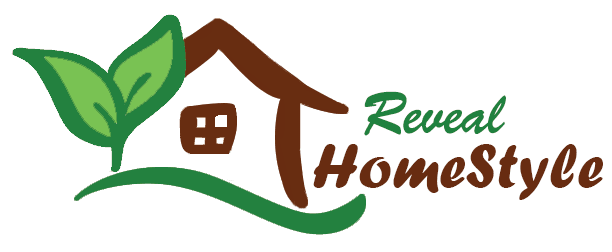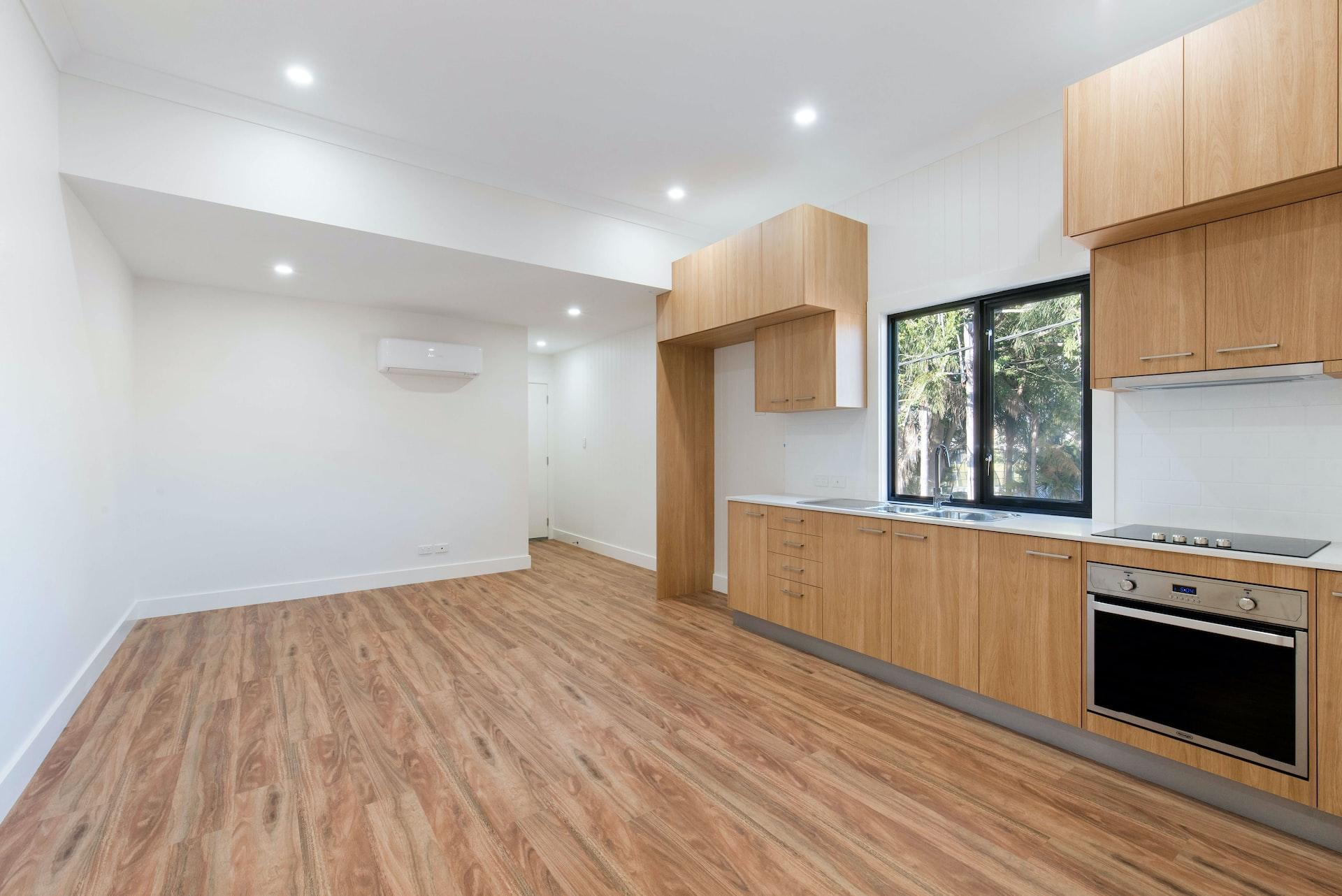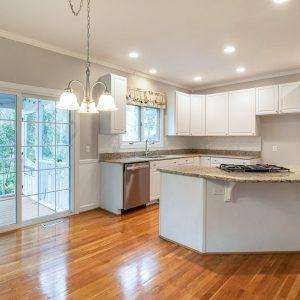Squeaky floors are an annoying problem for many homeowners. The noise can be quite disruptive and embarrassing. Fortunately, experts who specialize in installing hardwood floors in Ottawa can assist you with this issue.
The first cause of squeaky floors is loose floorboards or joists that have become unstuck from the subfloor. When a floorboard or joist moves around, it rubs against the other pieces of wood in the subfloor, creating friction and noise. This is especially common in older homes where years of wear and tear may have caused pieces to come loose over time.
Another cause is moisture build-up in the flooring materials themselves. Moisture can collect under hardwood or laminate flooring, causing them to swell and buckle when stepped on, which produces a squeaking sound. Additionally, gaps between the boards can allow air to pass through them and create an annoying whistling sound when you walk across them.
Finally, certain types of furniture may be contributing to your squeaky floors if they are not properly anchored down (e.g., couches). Furniture that shifts around can scrape against floorboards and create noisy friction as well as put pressure on joints between boards and cause them to rub together more easily than usual.
Fortunately, there are several solutions available that can help you get rid of those pesky squeaks once and for all!
Preparation for squeaky floor repair
Before you can start fixing squeaky floors, it’s important to take the proper steps to ensure that the job is done correctly. To begin, you should inspect the floorboards to identify which boards are loose or noisy. Once the problem areas have been identified, use a drill and screws to secure them into place.
If there are any gaps between floorboards, fill them in with wood filler or putty. Finally, make sure to vacuum and sweep up any sawdust or debris before you apply a sealant to protect your floor from future damage.
Taking these preparatory steps will help ensure that your repair job lasts and that your floors look beautiful for years to come!
Gather tools and materials
Gathering the necessary tools and materials for fixing squeaky floors is an essential part of the process. To begin, you’ll need a drill and screws to secure any loose floorboards. You may also need wood filler or putty to fill any gaps between boards.
Additionally, you’ll want to pick up a sealant to protect your floor from future damage. Lastly, it’s a good idea to have a vacuum and broom handy for cleaning up sawdust and debris after the job is done.
With all of these supplies in hand, you can be sure that your repair job will last and that your floors will look beautiful for years to come!
Identify the exact spot and source of the squeak
Identifying the exact spot and source of a squeak in your floorboards is an important step before beginning any repair job. To do this, it’s best to start by walking slowly across the area to pinpoint where the sound is coming from.
It may also be helpful to use a stethoscope or other listening device to help you narrow down the location. Once you’ve identified where the squeaking noise originates, you can then inspect that area for signs of movement or wear.
Specifically, look for gaps between boards, loose screws, or broken pieces that could be causing the noise. When all else fails, tapping on various spots with a hammer can help you identify which board is responsible for making the sound.
How to fix your squeaky floor using shims
Squeaky floors can be a nuisance, but with the proper tools and techniques, it’s easy to get rid of that annoying noise. One way to do this is by using shims. Shimming involves slipping thin pieces of wood between the subfloor and joists in order to create a tighter fit. This will eliminate any gaps and reduce the amount of movement which causes squeaks.
To start, you’ll need to access the floor from below, so it may require some crawling around in crawlspaces or basements. Once you have gained access, look for any areas where the subfloor is not flush with the joists.
If there are gaps, use a carpenter’s level to make sure they are even all around before placing your shim into the gap. Make sure that your shim is slightly thicker than the gap so that it will fill it completely and provide adequate support.
Finally, secure your shim in place with nails or screws and check again with your level to make sure everything is even. With just a few simple steps, you can easily fix those annoying squeaks and restore peace back into your home!
Fixing your floors with a block of wood
Reinforcing a joist with a wood block is an easy way to fix squeaky floors and reduce the size of larger gaps between the joists. This process involves taking a piece of wood, cutting it to fit the space between the floorboards and joists, then securely fastening it in place with nails or screws.
Start by measuring the gap between your floorboards and joists. Then cut a piece of wood to fit into this space using either a saw or chisel. Make sure that the piece you cut is slightly bigger than the gap so that you can press it firmly into place when you secure it.
Once you have cut your block, position it into place and make sure that it fits snugly between your floorboards and joists. Secure it in place by hammering nails or screws through both sides of the block into each side of the floorboard or joist. You may need to use two nails on either side for extra reinforcement.
Finally, check all around your new wood block to ensure that there are no areas where air can flow through – if there are, fill them with caulk before painting over them for added protection.
When finished correctly, reinforcing a joist with a wood block should improve stability, reduce noise from creaking boards, and prevent future damage due to movement between floorboards and joists.
Fixing a squeaky floor from above
If you are looking to fix a squeaky floor without accessing the underside, it is possible to secure the floor from above. The first step is to pull back any flooring that can be removed to reveal the subfloor, like with stapled carpets.
Once exposed, screw through the subfloor into the joists. If the floor cannot be pulled back, use specialty-scored screws that break away just below the surface of the floor in order to avoid unsightly screw heads. Make sure to use an appropriate length of screws as well as pre-drill holes if necessary.
Lastly, check for squeaks and make adjustments as needed. With these steps, your floors should be secured and free of squeaks!
Preventative measures to stop future squeaks
Preventing future squeaks on your floor is an important step for any homeowner. One of the most effective preventative measures is to secure the floor from above. This involves either pulling back carpets and other floorings to reveal the subfloor, or using specialty screws that breakaway just below the surface.
When doing this, make sure to use appropriate length screws and pre-drill holes as needed. You should also check for squeaks before completing the project and make adjustments if necessary. Taking these steps will help ensure your floor remains secure and free of squeaks for years to come!
When to call a professional
If you’re dealing with a squeaky floor, you may want to consider calling in a professional. While it’s not always the case, a squeaky floor can sometimes be indicative of a larger issue within the floor system that could require more than just some simple DIY fixes.
If you’re able to view the floor from underneath, check for any gaps or damage to the subfloor, joists or other components. If they are present, it’s likely time to call in a pro.
Issues such as foundation failure due to settlement, termite damage, water damage or other hard-to-diagnose problems could be causing your squeaks and need to be addressed by an experienced specialist.
A professional will be able to properly diagnose the underlying problem and help you find the best solution. Don’t ignore a squeaky floor – addressing it sooner rather than later could save you from bigger issues down the line!
Summary
If you’re dealing with a squeaky floor in your home, don’t ignore it! Fixing the problem can provide a number of benefits.
Firstly, the noise can be distracting and annoying. Nobody likes to hear those loud creaks and groans every time someone takes a step.
Secondly, fixing the issue is important for structural integrity. If your floor isn’t properly secured, it can eventually lead to more serious problems down the road.
Finally, taking care of squeaky floors now will save you money in the long run. It’s much cheaper to address small issues like this early on than it is to wait until they cause major damage. With some simple repairs and reinforcements, you’ll have a squeak-free floor that looks great and lasts for years to come!




